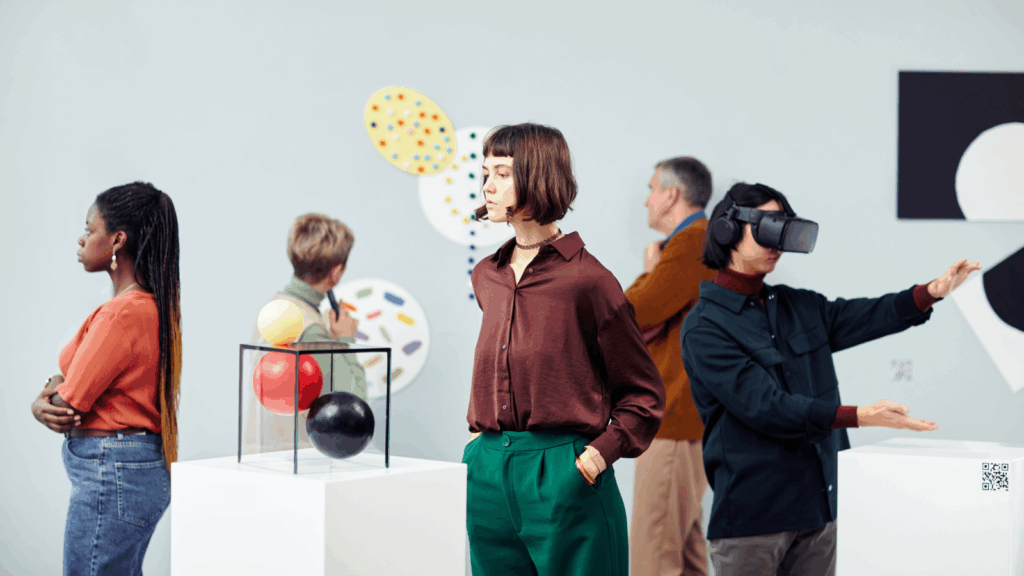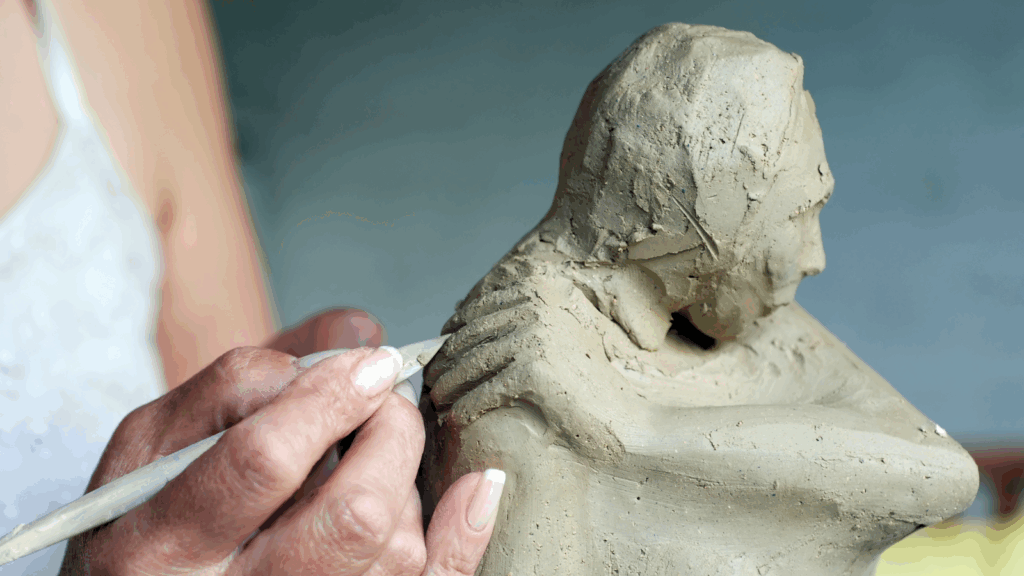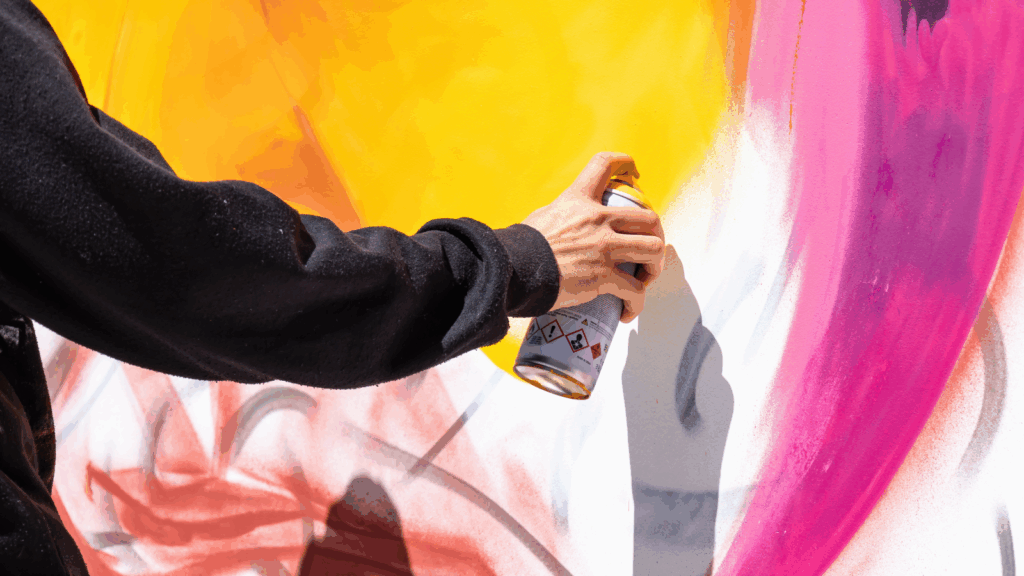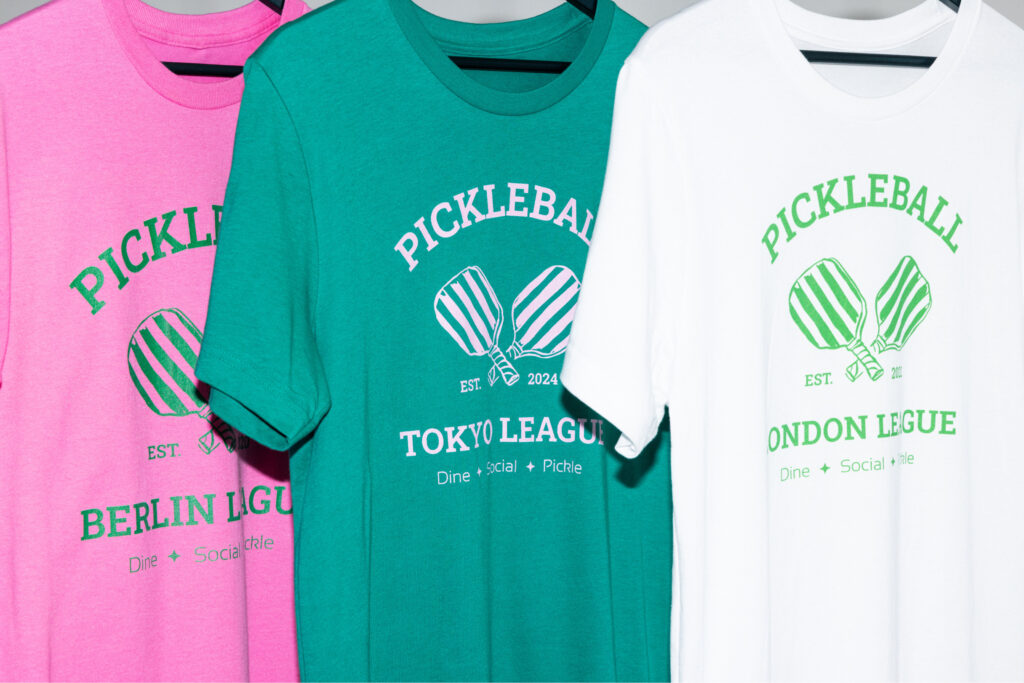Turn passion into profit with Printify
Want to create art that sells? It’s not just about making beautiful pieces – it’s about turning your creativity into profit and building a successful career.
Whether you’re an art enthusiast, established artist, interior designer, or home decor brand owner, we’ll help you learn how to sell art to your target audience.
Discover what kind of art sells best and find the most effective online sales strategies and business models to market your creations to anyone, from art collectors to casual art buyers.
This post may contain affiliate links, which means we may earn a commission if you make a purchase through those links. This comes at no additional cost to you.
What kind of art sells the most?
The success of any artwork depends on various factors. Some buyers prioritize certain styles and mediums, while others are drawn to specific colors or sizes that fit their space and aesthetic.
By understanding which combination works best and aligning these factors with market demand, you significantly increase your chances of selling art.
Medium types

- Paintings
Original paintings represent more than 80% of high-end contemporary art auction sales, proving that traditional art mediums like acrylic paintings continue to dominate the upper-tier market.
The increasing popularity of online art platforms helps expand the global market for paintings, making it easier for both established and emerging artists to reach collectors worldwide.
- Limited edition prints
Art prints are a fantastic choice for buyers and creators like painters and photographers. They are more affordable and accessible to a wider audience than one-of-a-kind pieces, making prints easier to market and sell.
Print sales also help you generate passive income, especially when using Print on Demand. Leveraging Printify, you can repurpose your work on canvas or postcards with exceptional color accuracy and detail using fine-art quality Giclee digital printing.
- Sculptures and mixed-media pieces

While these cater to a niche audience, mixed-media art is consistently in demand, especially in the high-end market. Just look at Damien Hirst’s renowned paintings made of real butterflies.
Sculptures, whether abstract or figurative, tend to attract buyers looking for something unique and tactile for their art collections.
- Wall art
Attract buyers looking to enhance their homes or offices with statement pieces. Art printed on large wall decals can become the focal point of any room – perfect for showing off your striking creations.
Wall decals are trending due to their accessibility and ability to transform any space. Print your art on large, easy-to-apply wall decals from Printify’s catalog.
- Digital art and NFTs
Digital drawings, paintings, animations, 3D models, and interactive media have surged in popularity with the rise of Non-Fungible Tokens (NFTs) – blockchain-based assets that verify ownership and authenticity of digital art pieces.
With sales of NFT collectibles totaling around $6.3 billion in 2023, it offers a new frontier for selling art.
Styles and subjects

- Contemporary art
An impactful style in the art world today, many successful artists produce work that responds to global and social issues, politics, and identity.
Between 2018 and 2022, roughly 3,000 contemporary artworks sold for over $1 million, reflecting its popularity among high-end collectors.
- Modern art
Modern art includes movements such as Cubism, Futurism, and Surrealism, which paved the way for contemporary art as we know it today.
While it remains valuable in the collectors market, today’s artists frequently create art inspired by modernism. They build on its themes and techniques while adapting to current social, political, and technological contexts.
- Art Deco
One of the most iconic art styles from the early 20th century, Art Deco visualizes the transition into modernism. With sleek, geometric patterns, this type of artwork taps into the nostalgia of a glamorous past.
Original Art Deco is considered collectible vintage art, but it continues to inspire contemporary artists today – evoking a sense of luxury and elegance in both fine art and home decor.
- Abstract art
Abstract paintings are a favorite due to their versatility. This type of art easily adapts to various interior settings, making it appealing for diverse design projects.
The lack of specific imagery allows abstract art to become focal points without overwhelming a room, making them highly sought after by collectors, interior designers, and homeowners.
- Street art
While it began as a form of counterculture, street art has become a significant player in the fine art world. Artists like Banksy have popularized the style, blending political activism with artistic expression.
Making art that taps into urban culture and social commentary has gained significant traction among younger, socially conscious audiences.
- Pop art
Rising to prominence in the 1960s with iconic artists like Andy Warhol, this style challenges traditional art by transforming imagery from commercial culture and mass media into bold, eye-catching pieces.
Today, artwork inspired by the pop art movement remains popular due to its colorful and playful style.
- Portraits and figurative art
These timeless favorites capture human expression, identity, and storytelling in ways that deeply resonate with buyers.
Blending tradition with modern techniques, portraits and figurative works evoke strong emotions and appeal to art enthusiasts, collectors, and interior designers.
- Landscapes and nature art
From stunning beach scenes to impressionistic landscapes, art capturing the beauty of nature holds timeless appeal, particularly among collectors who prefer more traditional approaches.
Contemporary interpretations of nature and landscapes are also popular with younger audiences, making this style flexible and continuously in demand.
Colors and sizes

Color trends play a significant role in determining what kind of art sells best.
- Vibrant, energetic hues like electric blues, neon pinks, and bold oranges are sought after among audiences looking for bold centerpieces.
- Muted pastels, monochromatic palettes, and earthy tones are popular for their versatility in various interior settings.
The size of the artwork is also crucial, as it affects how the piece fits into different spaces and influences its perceived value.
- Small pieces like prints and postcards are easier to sell at a competitive price.
- Mid-size pieces like paintings and posters are popular due to their adaptability to various interior settings.
- Large pieces like wall decals attract buyers looking to make a statement.
Want to go beyond traditional canvases? Explore Printify’s Catalog and discover other types of artwork that sells.
How do you sell contemporary art online?

The market has gone digital, with total global online sales in art and antiques totaling $11.8 billion in 2023.
Learn how to make art that sells by following these tips to start your art business.
Establish your unique style
Creating original art and developing a signature aesthetic will help you stand out in the competitive art world.
- Find inspiration
Study the artists, movements, and experiences that inspire you, and analyze how they influence your work.
- Experiment with different techniques and mediums
See what resonates with your creative vision. While studying other artists is important, always stay true to your authentic voice to avoid simply replicating what’s popular.
- Seek constructive feedback
Advice from mentors and your audience helps evolve your style. This process of refinement is key to developing a personal signature that sets you apart from the vast majority.
Study trends

Tuning in to what’s popular is essential for knowing what kind of artwork sells. By understanding what appeals to art buyers, you can create pieces that align with contemporary tastes while maintaining your unique style.
- Research keywords
Utilize tools like Google Trends to identify popular art-related search terms and understand what themes or styles people are currently looking for. - Research social media
Platforms like Instagram and Pinterest are great for tracking visual trends. Follow art influencers, galleries, and popular hashtags to discover trending colors, techniques, or subjects. - Research online art platforms
Visit sites like Saatchi Art or Artfinder to spot emerging trends in mediums, or artistic styles. These platforms often showcase what’s popular among collectors and curators. - Research eCommerce marketplaces
See what art products are popular on platforms like Etsy and Shopify. Analyzing top sellers and customer reviews can give you insights into the demand for specific art styles and mediums.
Target your market
Successfully selling your art requires a deep understanding of your target audience. Identify your potential buyers’ demographics to determine what type of art sells best.
Younger buyers (Millennials and Gen Z) are interested in more affordable pieces, such as prints and digital downloads like fan art. They tend to favor contemporary styles that are vibrant and culturally relevant, and often rely on social media trends to drive their preferences.
Older collectors generally seek traditional art like oil paintings and sculptures. They typically invest in established names or pieces that evoke a sense of timelessness, making them more likely to purchase original artworks.
Meanwhile, the US remains the largest online art market accounting for 42% of global sales, with China and the UK taking second and third place. This makes them prime markets for artists to target, particularly those selling contemporary or high-value works.
Pick the best business model and sales channels

Your business model and selling platform impact how you create, distribute, sell, and scale your art.
- Print-on-demand (POD) model
Sell custom-designed prints and products showcasing your art without holding inventory. Your POD partner, like Printify, will handle production and shipping. Utilize Printify integrations to sell your products on various online platforms and marketplaces.
Best for: Artists, designers, or entrepreneurs wanting to put their art on products like canvases, home decor, and accessories.
Why it’s popular: Low-risk and scalable, Printify handles all order fulfillment for you.
- Direct-to-consumer (D2C) via your own website
Selling directly through your website means having complete autonomy over the sales process, from payment gateways to customer experience. It’s great for publishing a virtual art gallery and establishing a strong brand.
Best for: Artists or brands who want control over their online presence.
Why it’s popular: Build a loyal audience and retain full profits from your art sales.
- Subscription-based model (membership/Patreon)
Provide exclusive content or perks to paying subscribers, establishing a consistent and reliable revenue stream. Most artists may use this to supplement their income from selling artwork.
Best for: Artists with a dedicated following.
Why it’s popular: It provides recurring revenue.
- Selling digital art as NFTs
Many artists create and sell digital artwork as NFTs, using blockchain technology to verify ownership and authenticity.
Best for: Digital artists and creators.
Why it’s popular: NFTs create investment opportunities, attracting digital art collectors.
- Commission-based model
Accept personalized requests to create one-of-a-kind pieces for individual clients, like pet portraits or custom landscapes.
Best for: Artists creating bespoke artwork.
Why it’s popular: Work with clients while charging a premium.
- Online marketplaces
Sell your work on platforms such as Etsy, eBay, or Saatchi Art, leveraging the platform’s existing audience to drive sales.
Best for: Artists or entrepreneurs wanting to sell art quickly.
Why it’s popular: It provides exposure without the hassle of building an entire platform from scratch.
Set prices
Consider factors such as your experience level, the market demand, and the piece’s medium, size, and uniqueness to price your art effectively. Here’s a general guideline to get started.
- Prints and photographs
New or emerging artists: $20 to $200 for small to mid-sized prints.
Established artists: $200 to $1,000 for high-quality limited edition prints.
- Small originals
New or emerging artists: $100 to $500, depending on the medium.
Established artists: $500 to $2,000 or higher, depending on the artist’s reputation and uniqueness of the work.
- Large originals
New or emerging artists: $500 to $2,000, depending on the size and complexity.
Established artists: $2,000 to $10,000 or more, especially if the piece is highly detailed and the artist has a strong market presence.
Market your art

If there’s one thing all best-selling artists today have in common, it’s knowing how to build an online presence and reach potential buyers. Here are some key strategies to help you promote your art.
- Participating in exhibitions and fairs
Marketing through art fairs, exhibitions, and contests can increase social engagement and drive traffic to your store. It also enhances your credibility as an artist.
- Social media
Publish your work, connect with your audience, and build a following. Use targeted hashtags, post regularly, and engage with other creators to increase visibility.
- Blogging
Share your creative process, inspiration, and behind-the-scenes stories through blog posts. This engages potential buyers and gives them insight into your work, fostering stronger connections.
- SEO (search engine optimization)
Optimize your listings with relevant keywords to improve search rankings. Use tools like Semrush to research popular terms and incorporate them into your titles, descriptions, and blog posts.
- Email marketing
Build an email list of interested buyers and collectors to send updates on new releases, exhibitions, and promotions. Newsletters keep your audience engaged and encourage repeat purchases.
Sell your art with Printify
Printify simplifies printing your artwork onto physical products like canvases, posters, decals, and various interior design items. Focus on scaling your online art business while we take care of the rest.
- Cost-effective
Start selling your art without upfront costs. We’ll print your product only after a customer orders.
- Global reach
Leverage our global network of fulfillment centers to reach customers worldwide with fast and reliable shipping.
- Passive income
Create artwork once and earn passive income from ongoing art sales while we handle inventory and logistics.
1. Sign up
Sign up for a free Printify account.
2. Pick a medium
Browse through Printify’s Catalog and select products you want to reproduce your art on, like canvases or phone cases.
3. Get your art ready for printing
Upload high-resolution images of your art using our Product Creator. See the mockup of your final print and adjust the design’s positioning and size before sending it to production.
4. Order or sell
Purchase art for yourself by placing a sample order or start selling art online on eCommerce platforms like Shopify and Etsy.
Make art that sells with Printify!
FAQ
The record for the most expensive artwork ever is Leonardo da Vinci’s Salvator Mundi, which sold for $450.5 million in 2017.
However, the most expensive artwork sold recently is René Magritte’s L’empire des lumières from 1954. The Surrealist piece sold for $121.16 million at Christie’s New York auction in 2024.
Abstract creations, nature-inspired designs, and eco-friendly art are currently the most in-demand categories, driven by their versatility and appeal to many buyers.
Limited edition prints, affordable originals, and collectible pieces in unique niches perform well on eBay.
Handmade, vintage, and custom prints are the most popular types of art on Etsy, appealing to a broad audience of home decorators and collectors.
Wrapping up – Start selling art today
Succeeding in the art world isn’t just about crafting stunning pieces – it’s about knowing how to align your vision and expertise with the demand of art lovers everywhere.
By following the right strategies, like choosing the best mediums, understanding market trends, and using platforms like Printify, you can turn your passion into a profitable art business.
































